Chaucer’s Medieval London Guided Walk Sun 11.30am 7th April 24 Aldgate Tube. To Book
The Decline And Fall Of Roman London Walk Sat 1.30pm 25th May 2024 Exit 2 St Pauls Underground Station. To Book
Jane Austen’s London Sat 6pm 25th May 2024 Green Park Tube (Green Park exit, by the fountain) to Book
The Peasants Revolt Anniversary Walk Thurs 6.30 13th June 2024 Aldgate Tube. To book
Chaucer’s Medieval London Guided Walk Sat 2.30pm 6th July Aldgate Tube. To Book
Myths, Legends, Archaeology and the Origins of London Sat 6pm July 6th 24 Tower Hill Underground To book
Roman London – A Literary & Archaeological Walk Sun 11.30 am 4th August 2024 Monument Underground Station To book
1066 and All That Walk Sat 2.30pm 9th Nov 24 Blackfriars Underground Station To book
For a complete list of my walks for London Walks in 2024 look here:
Francis Drake Knighted at Deptford April 4th

The Queen’s half share in the profits of the Golden Hind’s circumnavigation of the world, amounted to more than her normal annual income. So it is no wonder she knighted the Captain, Sir Frances Drake, in the dock in what is now South East London at Deptford. The Spanish were furious that a Pirate should be so honoured. The Queen may have given a French man the honour of dubbing Sir Francis to align the French more with the English against the Spanish.
Drake was one of the British heroes I read about as a child. I had a thick book with stories about people like Hereward the Wake, Drake, Charles II, Bonny Prince Charlie, and David Livingstone. Drake was remembered for being the first English person to sail around the world, and his exploits in ‘singeing the beard of the King of Spain’ and his piratical raids on the Spanish Main. In these books, the Spanish were the bad guys and we were the good ones. Drake was one of a brand of swash-buckling heroes who turned Britain from a not very important country on the edge of Europe, to one of the World’s Great Powers.

On the other hand, he was also a pioneer in the Slave Trade, was involved in atrocities in Ireland and in the Spanish Territories, and had one of his crew executed in dubious circumstances. Perhaps more significantly, his contemporaries did not entirely trust him.
On the first days of contact between the British Navy and the Spanish Armada, he was tasked with leading the nightime pursuit of the Armada up the Channel. The idea was to stop them landing and to drive them away and into the North Sea. Drake in the Revenge was leading the pursuit, and the other ships were told to follow a single lantern kept alight in the stern of Drake’s ship. The light went out, and the British pursuit was disrupted. The next morning Drake comes back having captured the disabled Spanish galleon Nuestra Señora del Rosario, flagship of Admiral Pedro de Valdés, and substantial gold to pay the Spanish Armada.
In the end, the lantern incident did not stop the British forcing the Spanish to flee around the North of Scotland, upon which perilous voyage only about 60 of their ships returned to Spain out of about 130. Britain was saved.
The Nuestra Señora del Rosario and its crew were taken to Torre Abbey, Torbay and imprisoned. The Abbey is now a lovely museum with an Agatha Christie Poison Garden amidst the ruins of the Premonstratensian Abbey. Its tithe barn was used to hold 397 prisoners of war from the Spanish Armada in 1588.

Sir John Gilbert, who was Sheriff of Devon at the time also used 160 Spanish Prisoners of War to develop his estate above the River Dart which is now enjoyed by those millions of visitors to what became the summer home of Agatha Christie (Greenway).
Queen Elizabeth I decided that the Golden Hind should be permanently docked in Deptford, and the ship was placed in a ‘dry’ dock filled with soil until the ship decayed slowly with time, and by about 1660 nothing much was left.
I remember as a young archaeologist that some of our team took time out to work with Peter Marsden, one of the great experts in Naval archaeology, leading a search to find Drake’s ship. There was a huge fanfare in the London newspapers, but, rather embarrassingly, given the build up, they failed to find anything of significance. Another attempt was made in 2012, but the prize of the discovery of a largely intact Elizabethan Galleon was not made.
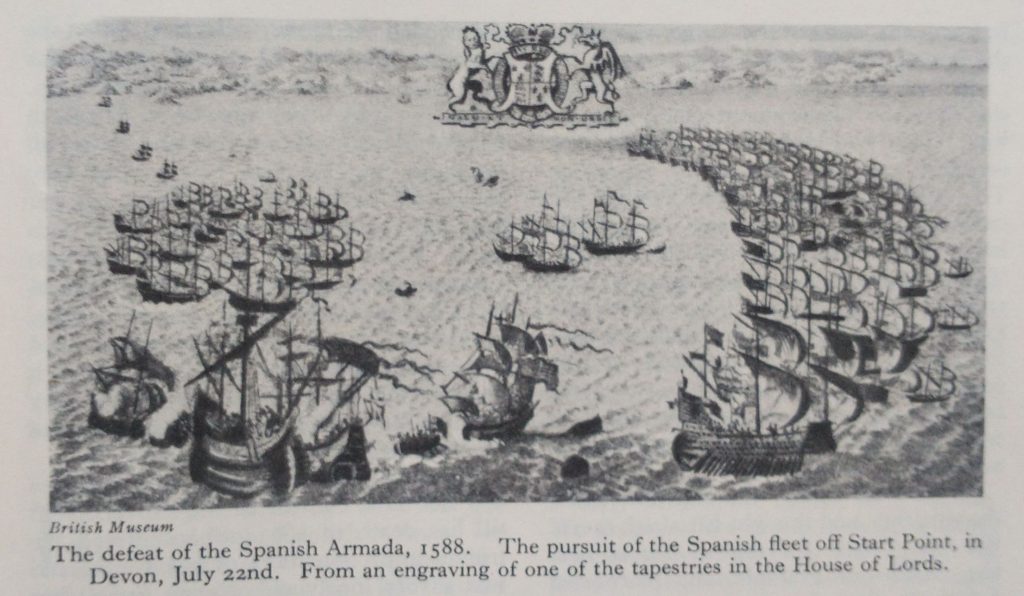
All Fools Day April 1st

The first unambiguous British reference to April Fools Day is by diarist John Aubrey’s “Fooles holy day” in 1686, although he might have been referring to Germany. (‘We observe it on ye first of April… And so it is kept in Germany everywhere.)” For more details read hoaxes.org
But there is a possible earlier reference in Chaucer in the Nun’s Priest’s Tale which I find quite compelling but most Chaucer scholars don’t. This is the text:
When that the monthe in which the world bigan
That highte March, whan God first maked man,
Was complet, and passed were also
Syn March bigan thritty dayes and two
So, if you have been keeping up with me, you will know that the first lines are referring to March 25th, (when the world began) when God made Adam and Eve, and when the Church started the New Year and the year number moved one on. This was a major Church festival, usually followed by a week of holiness. The Roman New Year, January 1st, ended with a light-hearted festival called Saturnalia, and it is suggested that April 1st was, similarly, a day of release after the festival of the official Church ceremony of the New Year.
Chaucer’s last line says ‘Since March began thirty-two days have passed.’ A foolish person would not realise this is a reference to April 1st. Hence, this suggests a Fool’s Day already existed. Scholars tend to prefer to think that Chaucer was referring to May 2nd, counting the 32 days not from the beginning of March but from the end of March. I think they look at the second and third lines which read ‘That high March…. was complete’ and so add the 32 days to the end of March. Foolish in my opinion and not reading what Chaucer wrote.
I nearly always forget to honour April Fool’s Day (or April Fish Day as the French call it). But in Britain, we generally find that somewhere in our newspaper or TV station there is a April Fools Joke slipped in. The most remembered is the BBC piece showing film of Italian Farmers picking spaghetti from trees. Last year Harry and Megan proved irresistible and the Guardian reported that:
‘The Sun published a piece announcing the launch of Prince Harry and Meghan’s new video game “Megxit: Call of Duke-y” in which the royal couple try to reach California while dodging obstacles, including rival royals and the media, along the way.‘
This year this was the equivalent story (from the Guardian’s quiz on April Fool’s jokes:
Meghan Markle was criticised after it was revealed that when you put her lifestyle brand name – American Riviera Orchard – into the What3words location service, it points to a statue of Oliver Cromwell, who famously had a King Charles executed
Generally, in Britain, we play a prank and say ‘April Fool’ with great delight. But we are not allowed to continue beyond midday. The Scots used to call it ‘Hunting the Gowk’ and the main prank was to give someone a letter to deliver, and the person who opened the letter would read:
“Dinna laugh, dinna smile. Hunt the gowk another mile” and send the fool onto another leg of his or her’s fool’s errand. In Ireland the letter would read ‘send the fool further’.
April comes from Latin and it was Aperilis from aperio from ‘to open’ as this is the month when the Earth opens. In Anglo-Saxon the Venerable Bede mentioned that they called the month Eostremonath. But there really is no other evidence for the Goddess Eostre from where we get our word ‘Easter’. In Gaelic it’s the Cuckoo’s month ‘Ceitein na h-oinsich’. In Welsh it is Ebrill which comes from the Latin.
The image from the medieval Kalendar of Shepherds shows all the beautiful flowers blooming and a female sitting on the grass embroidering, and the star signs of Aries (a Fire sign, brave, independent and impulsive) and Taurus (an Earth Sign: stubborn, down to earth, sensual with good taste).
First published March 25th 4004 BC and republished on April 1st 2024
The Moon on the Aventine Hill, Rome March 31st
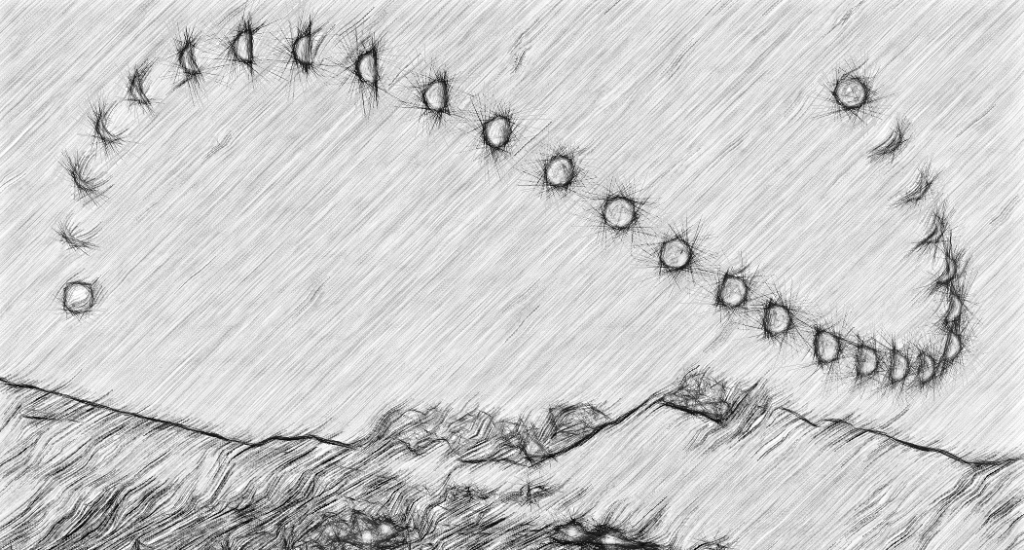
The Moon rules the months: this month’s span ends
With the worship of the Moon on the Aventine Hill.
Fasti by Ovid
The Aventine Hill is one of the seven hills of Rome, named after a mythical King Aventinus. It is the hill upon which Hercules pastured his cattle. According to Virgil in his Aeneid, the monstrous Cacus lived in a cave on a rocky slope near the River Tiber, and stole Hercules cattle. So, Hercules killed him. The worship of Minerva also took place on the Hill. You can take a Google Earth fly past if you follow this link – also some nice photos, and a link to Wikipedia.

The Hill is famous in the mythology of Rome because it is associated with Romulus. He and his twin Brother Remus, were born to the vestal virgin, Rhea Silvia, in the pre-Roman City of Alba Longa, not far away. Rhea was the daughter of former King Numitor, and in her sacred grove she was seduced by the God Mars, and gave birth to the twin boys. They had to be hidden from the wrath of their Granduncle, who had usurped the throne from their Grandfather. The boys were saved by the River God Tiberinus and then by being suckled by a Wolf in a cave called the Lupercal, which is/was at the foot of the Palatine Hill in Rome.
When they grew up, they helped their Grandfather reclaim the throne (being the children of the War God they were obviously excellent at the art of war). They decided to found their own City, but they could not decide upon which hill to build it or who to name it after (accounts vary!). Remus favoured the Palatine, Romulus the Aventine (some accounts say vice versa). They decided to let the Gods decide. Remus claimed to have won when he saw a flight of 6 auspicious birds but Romulus saw 12 and declared himself the winner. So, the City was named Rome in his honour, and it was founded on the Palatine Hill, with the Aventine originally outside the circuit.
The two fell out and Remus was killed. The story was first written down in the Third Century BC, and it was claimed that Rome was founded in 753BC. The stories continue to be told and celebrated in a way that we have forgotten in Britain as we ignore our creation myths of King Brutus, relative of Romulus and Remus, merely because they are unlikely to be true!
For more on Selene, see my post:
First written in 2023 and revised March 30th 2024
The Stormy Borrowing Days of March. 29th

Sir Walter Scott recorded that ‘the last three days of March are called the ‘borrowing days; for as they are remarked to be unusually stormy, it is feigned that March has borrowed them from April to extend his sphere of his rougher sway.’
There are various traditions and poems that record the borrowing days, and this is in the Scotch dialect:
March borrowed from April
Three Days, and they were ill:
The first was frost, the second was snaw,
The third was cauld as ever’t could blaw.
There is a Spanish story which explains this a little more. A shepherd asked March to calm the winds to suit his flock of sheep, in return for a lamb. March compiled but, then, the Shepherd refused to hand over the lamb. So, March borrowed three days from April and made them fierce and stormy. Versions of this tale are known from Staffordshire, North England and Scotland. (Source ‘Weather Law’ by Richard Inwards 1994 (first published 1893).
It has certainly been very windy here over the last few days, sunny spells followed by cold rain and fierce gusts.
Warm days at the end of March or the beginning of April bring the Blackthorns into bloom (already bloomed this year) and they are often followed by a cold snap which is known as a ‘Backthorn Winter.’

For a glimpse of Nature in art, follow this link to the ‘Ny Carlsberg Glyptotek’ in Denmark, a Museum with ‘a vast collection of art and sculpture.’ The link will take you to the ‘After Nature’ Special Exhibition page, and you can see a few of the Spring paintings, including a Gauguin and a Van Gogh. But, you can see more, including the ‘After Nature’ exhibition if you download the app. Another excuse to visit the wonderful City of Copenhagen – when I went, I stayed on an historic Wooden Ship in the harbour via Airbnb.

I have just received my copy of the Chamber’s Book of Days. It has been updated from the original 1864 publication, and it tells me that today is the anniversary of:
The Battle of Towton, England’s bloodiest battle (1461)
Official Opening of the Royal Albert Hall (1871)
Captain Scott’s last entry in his diary. (1912) ‘We shall stick it out to the end, but we are getting weaker, of course, and the end cannot be far, It seems a pity, but I do not think I can write more.’ See also my post Lawrence-oates-i-am-just-going-outside-and-may-be-some-time.
Charles Manson found guilty (1971)
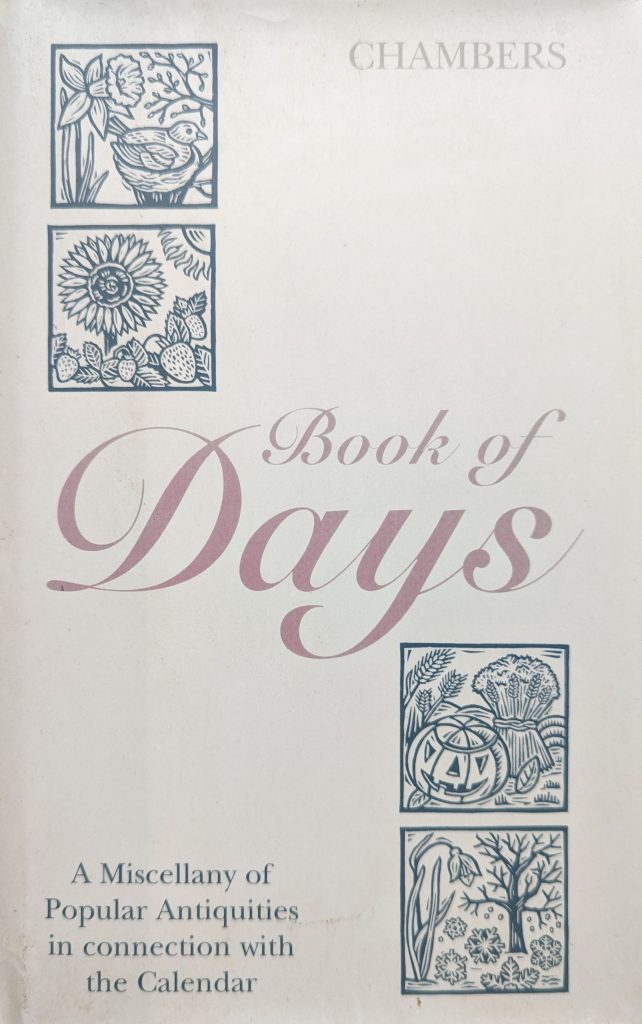
And many more. I’m sure I will be returning to this regularly in future months. Oh, and if you know anyone who would enjoy this content, please do send them a link and suggest they subscribe.
As Mad as a March Hare March 28th
The expression ‘Mad as a March Hare’ comes from the displays of hare boxing that takes place as the Hare mating season begins. And no, it’s not male hares fighting in the spirit of romantic rivalry, but the female hares fighting off unwanted attention from the males. Hares are solitary creatures, and the mating season is, perhaps, particularly difficult for them. The Country File website has more on the subject. www.countryfile.com
There are also March Kittens and March Chickens. Edward Topsell in his ‘History of Four-footed Beasts‘ 1607 says the best Kittens to keep are those born in March. ‘The Closet of Sir Kenelm Digby Opened‘ 1669 says: ‘Keep a black cock hatched in March as a protection against evil spirits: his crowing terrifies them.’ He also give a recipe for Cock Ale:
Eight gallons of Ale, a boiled March Cock, four pounds of stoned Raisins, half a pound of dates, nutmegs, mace. Beat the ingredients in a mortar, add to two quarts of Sherry. Add to the ale. Stop it in a container for 6 or 7 days. Bottle it, drink after a month.
Very weird. I challenge my readers to try it and let me know how it goes?
The hare is a sacred animal, it was sacred to Aphrodite:
‘For you know, I imagine, what is said of the hare, that it possesses the gift of Aphrodite to an unusual degree. At any rate it is said of the female that while she suckles the young she has borne, she bears another litter to share the same milk; forthwith she conceives again, nor is there any time at all when she is not carrying young.’
Classical Texts Library. Philostratus the Elder, ‘Imagines’ Book 1.1-15 c 3rd Century AD. Translated by Arthur Fairbanks.
Research reported by Exeter University suggests that hares were worshipped in pre-Roman Britain. Julius Caesar wrote:
“The Britons consider it contrary to divine law to eat the hare, the chicken, or the goose.”
‘The Battle for Gaul’ Translation by Wiseman, Anne, Wiseman, T. P. Published by Penguin Random House, 1980 ISBN 10: 0701125047 (TP Wiseman is my professor for Classical Studies at Leicester University)
In Neolithic Ireland hares were found buried with human remains at the Neolithic court tomb at Parknabinnia.

Hares are thought to be the original Easter Bunny although finding good evidence before Germany in the early modern period is difficult. There is a tradition that witches can be scared away at Easter. Exactly, how this works is not clear, but it has been said that witches could take on the form of a hare, and so Hare Pie and hare meat was eaten at Easter to rid the land of the witches. Or you could have a jugged hare. Jugging is cooking a whole animal in a container over water. Here is a recipe for jugged wild hare. Remember, you are not allowed to shot or trap them on a Sunday or on Christmas Day! For a discussion of hares and folklore, click here:
A jointed hare’s foot was considered very lucky and a remedy against gout, stomach pains and insomnia. (The Perpetual Almanack of Folklore by Charles Kightly, which I have used several times in this piece.) You can buy one on eBay. (Don’t click the links, it’s not an advert but a picture of an advert). I remember friends having rabbit feet which they carried around with them often on key rings?

First published in 2023 and revised March 28th 2024
Stone of Destiny on display in Perth March 30th

The Stone of Destiny is, today, on display again at the reopening of the redeveloped Perth Museum, in Scotland. This is near to its ‘original’ home at the Palace of Scone.
The Museums Association reports that it is a ‘£27m development project ….funded by £10m UK government investment from the £700m Tay Cities Deal and by Perth & Kinross Council, the museum is a transformation of Perth’s former city hall by architects Mecanoo.’
As well as the Stone of Destiny, the Museum has Bonnie Prince Charlie’s sword and a rare Jacobite wine glass, which are on public display for the first time. This is the first time the sword has been in Scotland since it was made in Perth in 1739. https://perthmuseum.co.uk/the-stone-of-destiny/
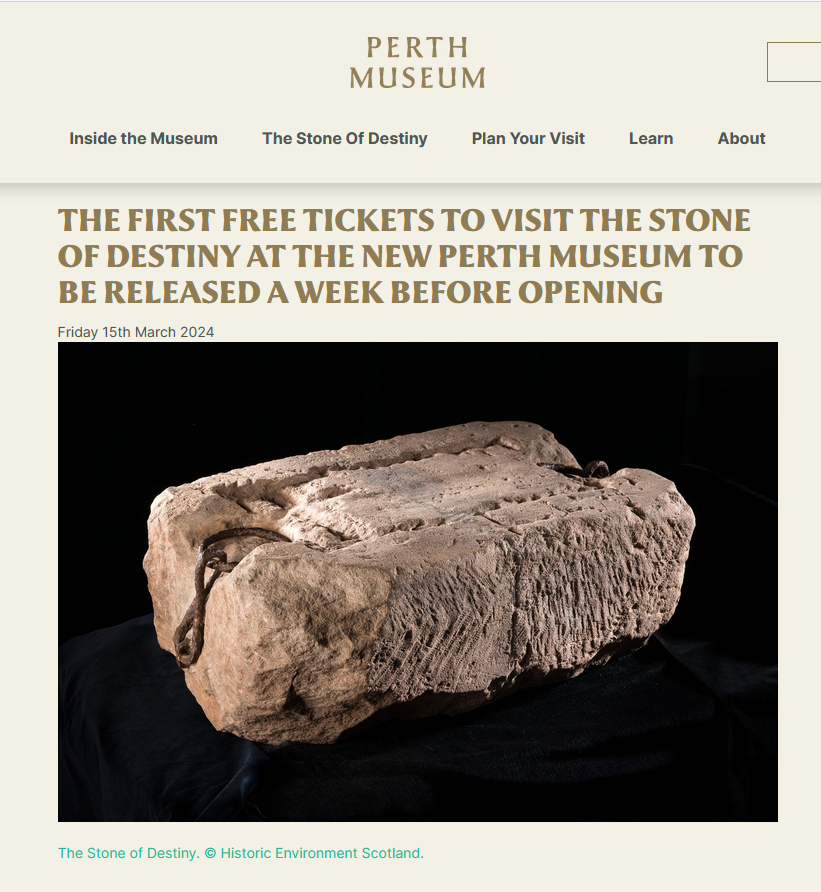
Before Perth, the Stone was in London under the Coronation Chair for the Coronation of King Charles III (6 May 2023) . Before that, it was on display at Edinburgh Castle after being sent back to Scotland by Blair’s Labour Government as a symbol of the devolution of power from Westminster to the restored Scottish Parliament in Edinburgh in November 1996. Before that, it was under the Coronation Chair from the time Edward I stole it (1296) from Scone as part of his attempted subjection of Scotland in the late 13th Century. So, virtual every English and British King has been crowned upon the Stone of Scone.
However, the Stone had a brief holiday in Scotland in 1950/51 after four Scottish students removed it from Westminster Abbey on Christmas Day 1950. After thee months, it turned up at the high altar of Arbroath Abbey. It was briefly in a Prison Cell, then returned to Westminster for the Coronation of Elizabeth II.
I’m guessing the-would-be liberators of the Stone, thought Arbroath was suitable, as the Declaration of Arbroath is the supreme declaration of Scottish Independence from England. Following the Battle of Bannockburn, and Robert Bruce’s leadership, the Scots wrote to the Pope of their commitment to Scotland as an independent nation. They said:
“As long as a hundred of us remain alive, never will we on any conditions be subjected to the lordship of the English. It is in truth not for glory, nor riches, nor honours that we are fighting, but for freedom alone, which no honest man gives up but with life itself”
The Pope agreed and Scotland remained independent until voluntarily joining England in the United Kingdom in 1714.

Before Edward 1 stole the Stone, it was at Scone Palace, upon which the Kings of Scotland were crowned, including Macbeth (August 14, 1040).

Those who attended the coronation traditionally shook their feet of all the earth they had brought from their homelands, and this over the centuries grew into Boot Hill, aka Moot Hill. So the mound represents the sacred land of Scotland. 42 Kings were crowned upon its soil on its Stone.
Before Scone, it was, possibly, in Argyllshire where the Gaelic Kings were crowned, Their most famous King was Kenneth MacAlpine and he united the Scots, Gaelic people originally from Ireland, the Picts, and the British into a new Kingdom which was called Alba, which became Scotland.
MacAlpine was the first king to be crowned on the Stone at Scone in 841 or so. He made Scone the capital of his new Kingdom because it was a famous Monastery associated with the Culdees who followed St Columba to Scotland. MacAlpine brought sacred relics from Iona to sanctify the new capital. And Scottish Kings were by tradition crowned at Scone and buried on the holy Island of Iona.
Before that, legend has it that the Scots bought the Stone from Ireland when they began to settle in Western Scotland (c500AD). The Scots, it is said, got the Stone from the Holy Land where Jacob lay his head on it and had a dream of Angels ascending and descending a ladder to Heaven. Jacob used the stone as a memorial, which was called Jacob’s Pillow (c1652 years BC).
But, questions about the Stone remain. Firstly, an angry Edward 1 failing to conquer the Scots makes a spiteful raid on Scone, but would the Monks meekly hand over the stone, or do they hide it and give him a fake?
Secondly, was the Stone brought to Scone from Western Scotland in the 9th Century?
These questions of doubt are based on the assumption that the Stone is made of the local Scone sandstone. If it were brought to Scone from somewhere else, it would be in a different type of stone, surely? So, either it was made in Scone, possibly for MacAlpine’s Coronation or the Monks fooled the English into taking a copy. So the English would then have been crowning their Monarchs on a forgery.
Ha! Silly English but then the Scots have spent £27m on the same forgery.
Historic Environment Scotland have recently undertaken a new analysis of the stone, which confirms: ‘the Stone as being indistinguishable from sandstones of the Scone Sandstone Formation, which outcrop in the area around Scone Palace, near Perth‘. It also found that different stone workers had worked on the stone in the past; that it bore traces of a plaster cast being made; that it had markings which have not yet been deciphered and had copper staining suggesting something copper or bronze was put on the top of it at some point in its history.
So it seems the Stone of Destiny was made in Scone.
The Beginning of the Universe as We Know It; Birthdays of Adam, Lilith, & Eve; Conception of Jesus, Start of the Year March 25th
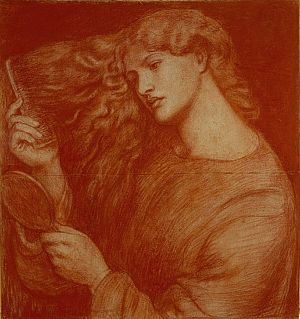
March 25th is the Annunciation—the day that the Archangel Gabriel tells Mary she is pregnant. (to see some very fine paintings of this meeting, look at my other March 25th post here)
March 25th is also the anniversary of the birth of Adam and Eve (and presumably Lilith); the death of Jesus Christ; the anniversary of the Immolation of Isaac; the Parting of the Red Sea; the Fall of Lucifer; and, (until 1752 in the UK) the beginning of the Year.
Of course, it isn’t or to put it another way, no one can, or ever could, prove any of these dates except the last one. So what they speak to is the way the Church saw the world as logically structured by God. Christian thinking about the year, the world, the universe, creation, developed over many years and took influences from many cultures. It is also very complicated to work out the sequence, so I’m going to summarise from what I know (or at least what I think I know).
Christians chose Christmas Day as the Birthdate of Jesus probably because it was a prominent birthday already shared with several Gods, but particularly Mithras and Saturn. It was approximately at Solstice, the beginning of the Solar Year, and close to one of the main festivals of the Roman World, the Saturnalia. December 25th might have been chosen by the pagan religions because it is the time when the Sun begins to rise, to the naked eye, further north each day, lengthening the day, increasing light and the promise of warmer weather.
So, Jesus was born on/or around the Solstice, so he must have been conceived approx. 9 months earlier, which would be around the Spring Equinox. I have always thought that the 4 or 5 days difference between the Solstice, the Equinox and the Christian festivals was down to the fact that the Calendars were not well coordinated with the actual movements of the Sun (because the Sun does not circle the earth in 365 days, or in 365 and a quarter days, but 365 days, 6 hours, 9 minutes which makes Calendars hard to align with the Sun). But I have just realised the importance of something I discovered yesterday when preparing my two posts on March 25th. And since writing that sentence I have had another revelation. But be patient.
So, God sends his Son to save the human race. God is a logical being, so she would send the Son at an appropriate time. If the Child is born at or near the Solstice, which is an appropriate time for the Son of the Creator, then 9 months earlier, March 25th, is near the Equinox, which is the beginning of Spring. For many people, Spring is a new beginning, for example, the Anglo-Saxons saw Winter as the death of the year, and Spring as the young Year.
So to the Creation. God, having a free choice, would have created the world at the beginning of Spring. In fact, if you think about it, God creates everything necessary for life at the creation in 6 days, and it is going to immediately spring into new life, and the first season must, therefore, be Spring? Right? So March 25th.
This gives a nice symmetry with Jesus’s Life. Conceived on March 25th, born December 25th, and died 30-40 years later, according to the Church, on March 25th. (the only other famous person I know born and died on the same day is William Shakespeare).
Easter, when Jesus is martyred, isn’t March 25th I hear you saying. But remember, Easter is a lunar festival, so its date varies each year. Births and deaths, on the other hand, are fixed to the Solar Calendar and the Church chooses March 25th as the most appropriate day to pin the death of Jesus, on the anniversary of his conception and the anniversary of the creation of the Earth, and I am guessing that this is also the preferred date for the Day of Judgement.
It is also the Birthday of Adam, and his first wife Lilith (or so some say), and Eve. More about Lilith below. I thought this date was just one of the parallels that the Church liked, Jesus and Adam born on the same day but, I have just worked out why Adam is born on March 25th, and why these dates are not the Equinox, March 20th but March 25th, which has been bugging me.
Let’s go back to the Beginning of Creation. According to the Anno Munda‘s arrangement of the Year, the world was created 5500 years plus 2023 years ago so 7523 Before the Present. And it was supposed to have ended in 600AD, 6000 years after the Creation. So, they got that wrong.
The Creation, as described in Genesis, has the following sequence of Seven Days. As the Creation began at the Equinox March 20th. I have added dates to the 6/7 day sequence of Creation:
- Day 1: Light – March 20th
- Day 2: Atmosphere / Firmament – March 21st
- Day 3: Dry ground & plants – March 22nd
- Day 4: Sun, moon & stars – March 23rd
- Day 5: Birds & sea creatures – March 24th
- Day 6: Land animals & humans – March 25th
- Day 7: The Sabbath of rest – March 26th
- For more information www.bibleinfo.com
So there you have it! Adam, Lilith, and Eve were created on Day 6 with the Land Animals – March 25th. Jesus conceived, also on this date, and so 9 months later is born on December 25th. It all makes sense, and aligns the Christian year fully with the Solar Year.
And that, dear Reader, is the very first time anyone has been able to explain to me why Christmas is not at the Solstice, and why the Annunciation was not at the Equinox. Maybe you all know this, but it is very exciting to work this out for myself. And believe me, I have done a lot of reading about calendars and not spotted an explanation.
So that was yesterday’s revelation. What about the revelation I had about 45 minutes ago? (now about 5 hours). When writing items like this, there are numerous things that are interconnected, and I begin writing them before realising I am interrupting the story I am trying to tell. This is often to the detriment of the story arc, or to understanding (although often, I think, adds to the joy of this blog – after all ChatGBT couldn’t write this stuff – could it?).
So I began to write about Dionysius Exiguus and his invention of the AD/BC system and about eras, cycles, and ages. (He replaced the Anno Mundo year with the AD/BC system in the 6th Century AD).
I was thinking about the beginning of the year. The Celts chose October 31st, Julius Caesar chose January 1st, other cultures have other dates, and the Spring Equinox is another choice sometimes made. The Church and Dionysius Exiguus choose March 25th, although secular society also recognised the claims of January 1st. Britain kept to March 25th until 1752 when we adopted the Gregorian Calendar. But people like Samuel Pepys celebrated New Year’s Eve on 31st December. So January 1st was the New Year, but the year number did not change until March 25th. So King Charles I thought his head was being cut off on January 30th 1648; while history books will tell you it was cut off on January 30th 1649. Same day, different reckonings.
December 31st/January 1st is essentially a Solstice New Year Festival. And I have, previously, used the difficulty of keeping calendars as to why these days has slipped out of alignment with the Solstice. But, today I realised that it is as likely that the reason is the Solar/Lunar nature of our time keeping. The year, and its festivals, is largely arranged around the Solar Cycle. But our weekly and monthly cycles are derived from the Moon. So, I think that January 1st (or the Kalends of January as the Romans would have called it) would originally have been the First New Moon after the Winter Solstice. Keeping the Moon months and the Sun years in sync is very, very difficult, and so Roman and Christian cultures gave up and fixed the moon months, completely abandoning any attempt to keep the months to the actual lunar cycle. This is our current system, in which only Easter remains a true to the moon festival, much to our perennial confusion.
Maybe you all know this, but I’ve learnt a lot in writing these two posts.
Lilith
The April 2023 Issue of ‘History Today’ has a short piece called ‘The Liberation of Lilith’ which suggests that the story of Lilith, a figure from Jewish Folklore, is first attested in a Medieval satirical text called ‘The Alphabet of Ben Sira’. The story goes that Lilith is created using the same clay as Adam. Adam then demands she lies below him during sex. She refuses, saying that they are both made from the same stuff and, therefore, equal. Adam refuses to accept this, and so Lilith leaves the Garden of Eden. So the story goes.
The story of Lilith, Sarah Clegg suggests, is one of a series of similar stories found around Europe and Asia. And Clegg assumes that it is gradually modified to make Lilith a demon who will kill babies unless the names of three angels are spoken out loud. So, the story survives as a charm to keep babies safe, and perhaps to remind people of equality among the sexes. But this causes problems for, OK, let’s call them out, the Patriarchy. Lilith cannot be equal to Adam so she becomes a monster, not made from the same clay as Adam but from the scum and waste left over from Adam’s creation. I imagine the story then went on to propose that God creates Eve from Adam’s rib, and so she is created from Adam, and is, therefore nor equal, but subservient to him. Lilith is now a significant figure in feminist folklore circles.
I wrote about more about eras and ages in my post which you can see her: Greater Cycles and the Six or Seven Ages
Attached to the watercolour of Lilith by Rossetti (at the top of the page), was a label with a verse from Goethe‘s Faust as translated by Shelley. (Wikipedia)
“Beware of her fair hair, for she excells
All women in the magic of her locks,
And when she twines them round a young man’s neck
she will not ever set him free again.”
The model is Fanny Cornforth, Rossetti’s mistress. He painted another version a few years later, but the model in that is Alexa Wilding. His models are arguably more interesting than the man himself and include: Elizabeth Siddall, Jane Morris and Fanny Cornforth. Christina Rossetti, his poet sister, modelled for Rossetti’s painting, Ecce Ancilla Domini which you can see here.
I think I might have enough material to begin my own Cult.
For more on the Annunciation, look at my other March 25th post here.
Campden House Fire Sunday March 23rd 1862
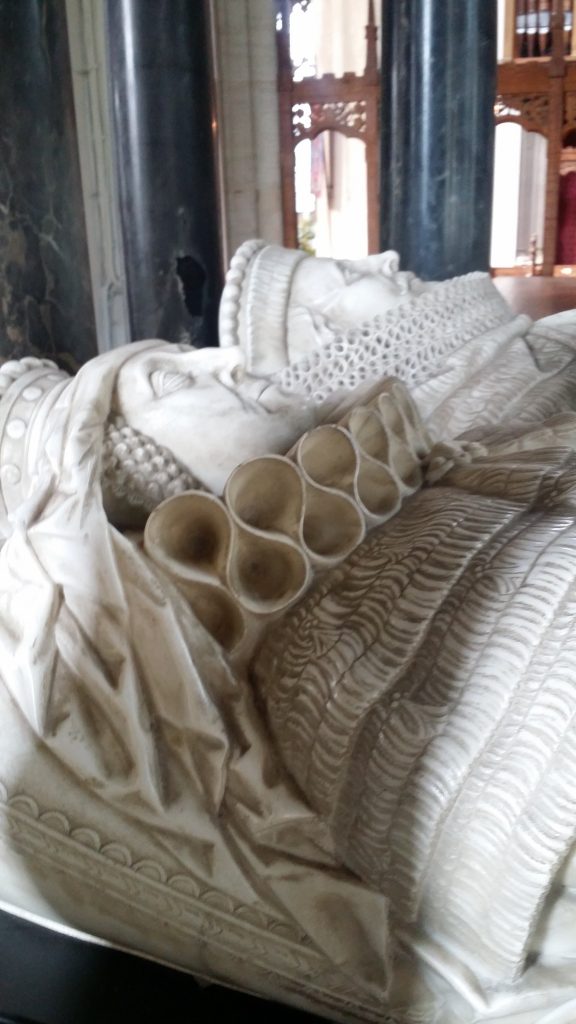
This anniversary commanded my attention because I spend a few weekends each summer in the Cotswolds, and often see the ruins of Campden House in Chipping Campden, which was burnt down in 1645. Both Campden Houses, one in Kensington, and the other in Chipping Campden were built for Sir Baptist Hicks, both of his houses burnt down.
Baptist Hicks is an example of the flexibility of the British system of aristocracy, of how common people, provided they are rich enough and have the right education, can gain entry to the elite.
Hicks was the son of a wealthy Mercer from Cheapside in the City of London. His mother is said to have been a moneylender, but when her husband died she took over the business and eventually passed it on to her son. The family had a shop with the sign of the White Bear on the corner of Cheapside and Soper Lane, near the Great Conduit.
Soper Lane was in the Cordwainers Ward, and the haunt of soap makers and shoe makers (cordwainers as they were called). But Cheapside was the home of Goldsmiths and generally a wealthy area.
Hicks was educated at Trinity College, Cambridge and at the Inner Temple in London. But despite, the rudiments of an education as a lawyer, he developed the family business and supplied members of the Aristocracy with silk, velvet, taffety and other expensive fabrics. He rose to be Mercer to Queen Elizabeth I in 1598, and supplied James VI of Scotland. He provided velvet, damask, and satin for the coronation of James 1st on 25 July, 1603.
His business developed as his wealth allowed him to loan large sums of money to the aristocracy and the King, and was duly Knighted in 1603. He was still running his shop. He was also an MP, and needed a country estate to transition to the aristocracy, and in 1608 purchased the manor in Chipping Campden. In 1612 he built Campden House.

At about the same time, he won a game of cards with Sir Walter Cope of the Strand, who was building a mansion (Holland House) on top of the Hill in Kensington. Hicks won a few acres of the Estate and asked Cope’s architect John Thorpe to design him a house, which Hicks also called Campden House. Thus, Kensington became fashionable, and Campden Hill got its name.
Among the many tenants of the house were Princess Anne before she became Queen, and Lady Burlington and her son, who became Britain’s first Palladian Architect.
Hicks was made a Baron in 1620 and Viscount of Campden in 1628. (a viscount is 4th in the ranks of aristocracy, being below an Earl and above a Baron). He died in 1629, and was buried in a very impressive marble monument in St James Church, Chipping Campden shown above.
The house in Chipping Campden was held by the Royalists in the Civil War but as the Parliamentary Army forced the King’s men to retreat towards Oxford, Prince Maurice ordered the house to be burned down. All that survives of the property are two banqueting houses, and the entrance. All show what a fine building it was.
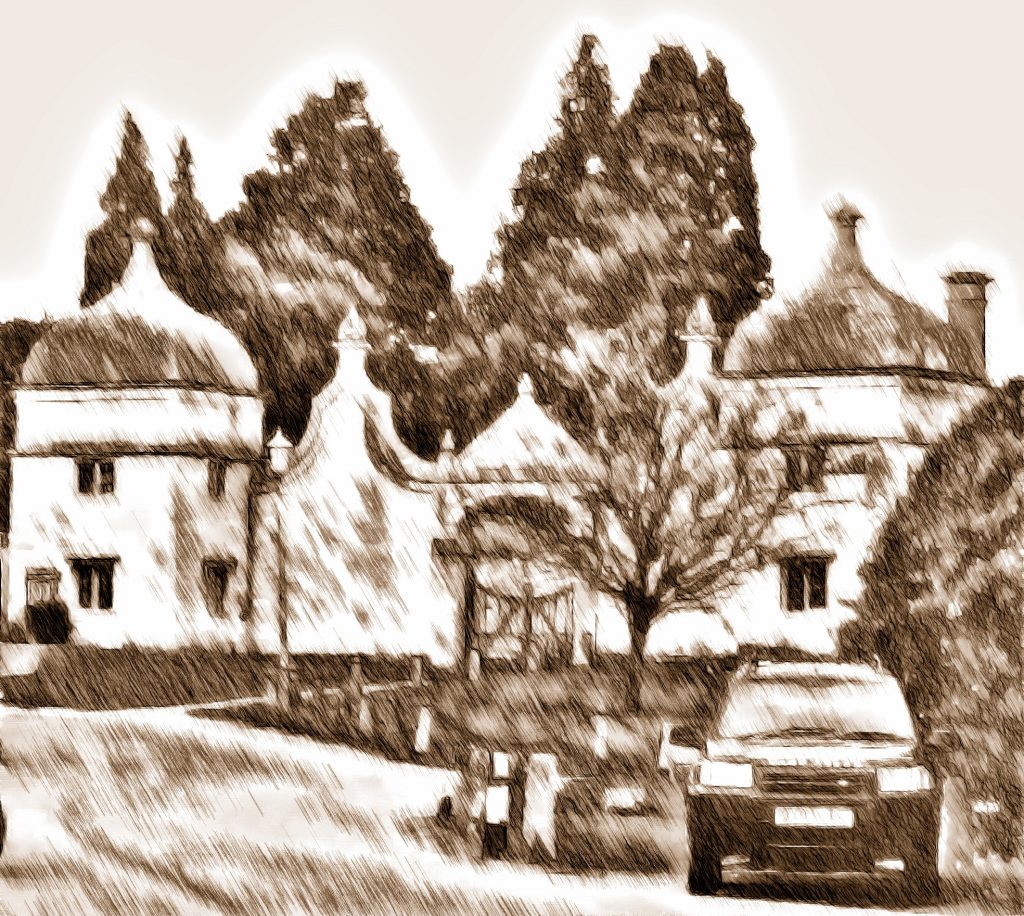

The fire at Campden House on 23rd March, 1862 gutted the building. It is really well described in a post which I recommend you read. Briefly, a neighbour saw the fire, a fire engine was summoned but before it could arrive a servant was seen at a window. Her son tried to push past her and she fell out of the window but survived. When the fire engine arrived it was too late and the house and its wonderful contents were destroyed. The owner was sued by the Insurance Company for fraud but they lost the case.
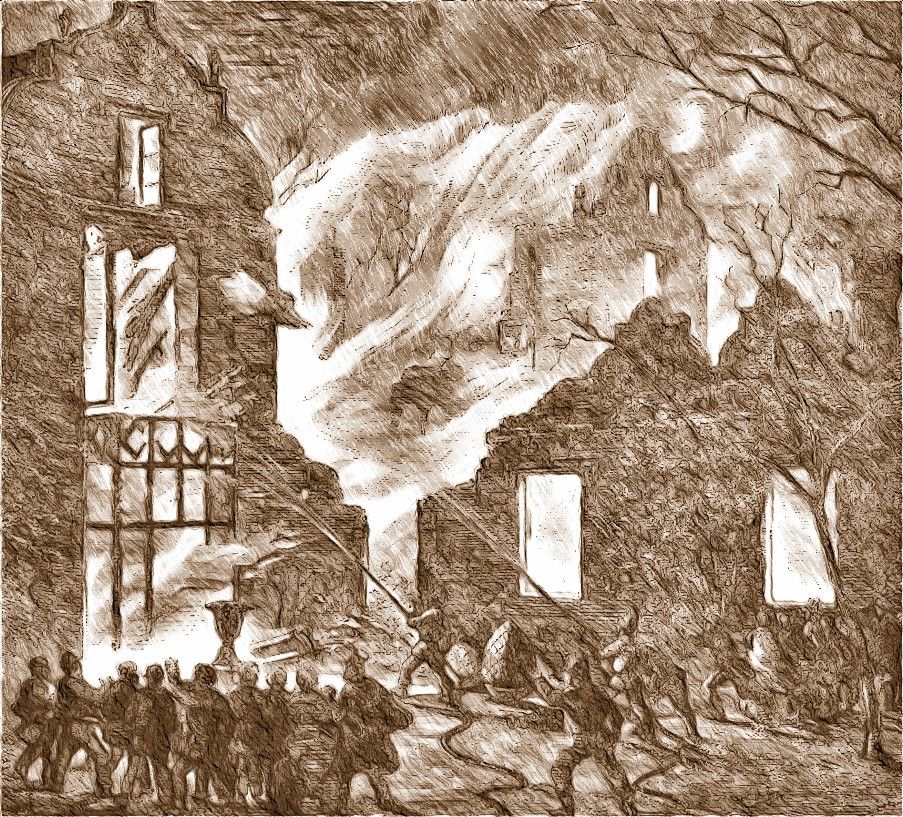
I came across the anniversary in a second hand book I picked up by my old boss, Sir Roy Strong. The book is called ‘The English Year’ and is written with Julia Trevelyan Oman and it is described as ‘A Personal Selection from Chambers’ Book of Days. (I just bought Chambers book on Abebooks for £ 2.10!). Both books are like, this blog, almanacs of the past.
Sir Roy Strong was the Director of the V&A. I didn’t really have much contact with him, being a lowly Assistant Keeper, but at the one Keepers’ Meeting I attended he seemed rather ineffectual as the chairman of the meeting. I remember some proposal was made to general approval, which Sir Roy didn’t seem to like, and the meeting ignored him. I also remember one of his assistants saying, he received a call from Sir Roy when no taxi was at the Airport to meet him, and expecting him to sort it out from the other side of the Atlantic!
Sir Roy is a dapper dresser with oiled moustache, probably with what one might call a neo-Georgian look, certainly, a dandy. But I always think he resembles Charles 1. However, when I consider the revival of the V&A under his tenure, I have to admit that my judgement of him was facile because a lot of the old architecture was revived under his control, the Victorian Cafe was transformed, the shop turned into a retail paradise and generally, the V&A ceased to be dusty and old under his control, and the wonders of the Victorian Museum shone with vibrant and rich colours. It reminds me that good leadership is allowing beneficial change to happen, it’s not about the leading being a dynamic alpha-person, but about moving an institution positively forward.
Aries, the Nose and the King’s Evil March 22nd

We have just entered Aries. Now according to astrology, Aries is associated with health issues of the face. This, according to ‘Skin and Astrology Signs‘ is because of the “level of heat in their bodies” they tend to have problems such as “flushing, heat rashes, skin eruptions, and rosacea,” And suggest using chilled cucumber for the eyes and forehead, and using beauty products with soothing aloe vera in them.
Charles Kightly in his Perpetual Almanac enjoins us to ‘Observe the features of the face which are ruled by Aries and seek cures for ills of the nose’.
He gives two examples. The first is from John Aubrey and relates to the fact that people believed that Scrofula, or the King’s Evil (tuberculous cervical lymphadenitis) could be cured by touching the Monarch. So, the King or Queen would make herself, very reluctantly, available for his sick public to touch her. I will say more about the subject below. Aubrey tells us this slightly revolting tale:
Arise Evans had a fungous Nose and said, it was revealed to him, that the king’s hand would cure him At the first coming of Charles II into St James Park he kissed the king’s hand and rubbed his nose with it: which disturbed the king, but cured him.
John Aubrey Miscellanies 1695.
An 18th Century publication gives us an idea how to understand people by studying their noses.
Nose round with a sharpness at the end signifies one to be wavering of mind; the nose wholly crooked, to be sure unshamefaced and unstable; crooked like an eagle’s beak, to be bold. The nose flat, to be lecherous and hasty in wrath; the nostrils large, to be ireful.’
The Shepherd’s Prognostication 1729
It was only the French and the English who believed the King’s touch could cure people. The French claimed it began with Philip 1 in the 11th Century, while the English claimed Edward the Confessor as the first. The French denied this saying that the French King of England, Henry 1 was the first to use the King’s Touch to cure people. The practice lasted until George 1 resolutely refused to have anything to do with it.
It took place in the winter, between Michaelmas and Easter, when cold weather provoked the disease. The lucky few who were allowed the Touch, would be touched or stroked by the King or Queen, on the face or neck, then a special gold coin, touched by the Monarch was put around their neck. Readings from the bible and prayer finished the ceremony. Before Queen Elizabeth, the Touch was said to cure many diseases such as Rheutmatism, culvsions, fever and blindness, but after it was reserved for Scrofula.

Dr Samuel Johnson suffered from Scofula and received the “royal touch” from Queen Anne on 30 March 1712 at St James’s Palace. He was given a ribbon, which he wore around his neck for the rest of his life. But it did not cure the disease, and he had to have an operation.
The Wandering Cardinal Points & Digital Heritage March 21st

This post was originally part of the Equinox Post but it was too long and I have moved the section on the cardinal points of the compass to here.
So, Spring has sprung. At the Equinox the sun now rises due East, and sets due West. The rising and setting points vary throughout the year, further North each day as we move to Summer Solstice, and further South as Winter Solstice approaches. Dawn and Dusk vary accordingly. The only fixed point in the Sun’s journey (as seen from Earth) is Noon. Every day, the Sun is at it highest point at Noon. And this is the definition of South, something that can be seen and measured. The Sun never strays into the North so the North is cold, remote, more mysterious, unknowable almost, except that it is defined by the opposite direction to South.
To my mind, it makes South/Noon very special. At Stonehenge, there are two exits. The biggest is aligned to the Midsummer Sunrise and Midwinter Sunset direction, but there is a smaller second entrance and this aligned due South. There is also a uniquely small standing stone in the main circle of Sarsens, and there was some sort of corridor heading South through the mysterious wooden phase which precedent the stone Stonehenge. So, we can be sure Noon\South was important at Stonehenge.

Noon, derived from ‘nona hora’ in Latin and is ‘one of the seven fixed prayer times in traditional Christian denominations.’ (Wikipedia)
Strangely, North, somehow, has come to be the principal direction, the one that is shown on all decent maps, and the one that people of my generation and hemisphere think of as being ‘up’. The Google generation sees things differently. You have to fight with Google Maps to get it to put North at the top of the map, and all over Britain, tourist maps on walls or plinths, increasingly show up as being the way you are looking and nothing to do with North. My children mock me when I say ‘You come out of the Tube station and you turn up the High street Northwards.’ Their view of maps is completely relational – you turn left out of the tube station, you walk past the M&S. you cross the road and walk along the park. They do not see any reason to know where the cardinal points are. Although I see this as being part of the Decline of the West, and ‘things were better in my day’, it is simply returning to the way maps were produced in the past.
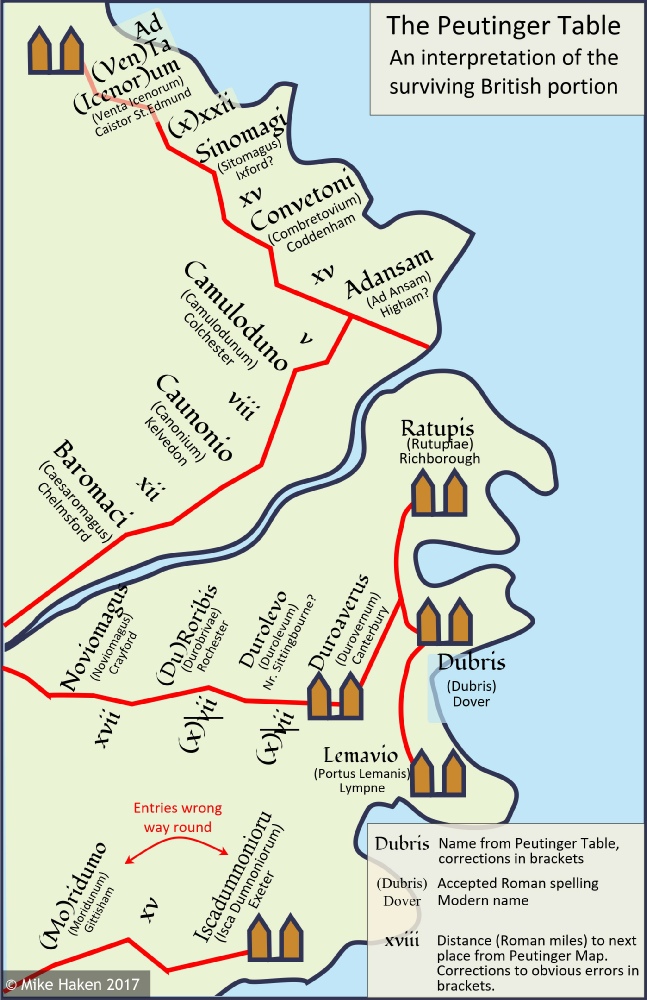
The four points of the Compass are called the cardinal points: “chief, pivotal,” early 14c., from Latin cardinalis “principal, chief, essential,” (online etymological dictionary).
Of course, there is another version of the cardinal points: the magnetic cardinal points. The magnetic cardinal points wanders over time and does not coincide with geographic north. In recent times they are close enough, but in the past there have been huge variations and occasionally the earth has had geomagnetic reversals when the north pole has pointed in different directions, including southwards. The last one was 780,000 years ago, and they take place on average very roughly every 500,000 years. The magnetic pole is caused by the molten iron in the earth’s core and mantle, which creates a dipole. Fluctuations in the dynamo flow of the molten iron cause occasional reverses. The science is very complicated and, even now, not entirely understood. Is it a random consequence of flow dynamics? Or do external events, like sinking continents, or meteor strikes cause the reversal? Of course, since the first use of compasses for navigation in the 11th/12th Centuries, the magnetic pole hasn’t wandered enough to be of concern to navigation. It has wondered a few hundred miles of over the last 500 years but is speeding up, from 9km a year to 52km (since 1970).

My first proper job after university was as a technician then research assistant at Oxford University studying these phenomena. I say ‘proper’ because when I left University, I became an itinerant archaeologist, digging in Switzerland, Northampton, East Anglia and Nottingham before I got the job at the Research Laboratory for Archaeology and the History of Art, Keble College, Oxford.
I worked for Dr. Mike Barbetti who was an expert on the wanderings of the Magnetic Pole. His interest was firstly in the pure science of the subject, but he was keen to explore the applied uses of the science to Archaeology as well. So, after being appointed as a Research Fellow at Oxford, he set up an epic journey from his native Australia to Oxford that went via some of the iconic sites of Palaeolithic Archaeology, such as Olduvai Gorge, Tanzania, site of excavations by Mary and Louis Leakey.
In order to plot the movements of the magnetic north, scientists needed dated samples, and early human sites provided dated sites over a long timespan. Also, archaeomagnetism, as the discipline became known, offered the possibility of dating sites. Another application was to determine whether deposits were fired or not. One of the sites Mike sampled was a candidate for the first evidence of fire in human existence. But was the scorched earth actually scorched rather than just discoloured?
As I said, Mike’s interest was discovering how the magnetic field of the earth changed over time, and, more importantly, what was the mechanism. He shipped back to Oxford samples of soil cast in Plaster of Paris. My job was to cut the samples up and to measure the strength and direction of the magnetic field in the samples. I cut them up with an electric saw in a shed in the backyard of the Laboratory, and then we used a mini-computer to measure the direction and intensity of the magnetic field in the samples.
Soil contains particles of iron, and they align randomly, so a sample of soil has a low magnetic intensity and a random direction of magnetic field. But once heated up, the iron particles align to the current direction of the magnetic pole and its intensity is proportional to the intensity of the Earth’s magnetic field. These measurements provide a method of plotting the changes of the magnetic field over time. And from these data, models could be constructed explaining how the iron in the earth’s core worked as a giant magnet.
We could, therefore, tell if a sample of soil had been heated by fire. Once we had built a reference curve for the movements of the direction of the magnetic pole and the changing intensity of the magnetic pole we might be able to develop another dating method to rival radio carbon, thermoluminescence, and tree ring dating, all of which were being developed at the Research Laboratory in Oxford.
Having got the results, I then typed them up onto machine-readable cards, took them to the Oxford University Computer Centre with a copy on cards of the programme written in Fortran, and gave them to the Computing Staff. They were run through the Centre’s mainframe computer which was probably an IBM or ICL computer, and 24 hours later I received a print-out to proofread. When I located mistakes, I ran an editing run of punched cards, essentially instructing the computer: ‘on card two replace 2.5 with 2.6, and run the programme again’. I would pick up the results 24 hour hours later. It seems extraordinarily primitive now, but then it was an enormous saving of time.
And that, patient reader, was my early contribution to Digital Heritage and pure science. We published at least three articles in the prestigious Science Journal Nature. And it is slightly annoying that my citations in the groves of academia are still dominated by articles I co-wrote in the late 1970s!
The work was important in the development of the study of the earth’s magnetic field. However, the use of archaeomagnetism in archaeology has never risen above strictly limited. Occasionally, in specific circumstances, it can be useful, but those circumstances tend to be times when no other methods came up with the goods and most often in attempting to date kilns.
These are the papers:
Barbetti. M and K. Flude, ‘Palaeomagnetic Field Strengths from Sediments baked by Lava flows of the Chaine des Puys, France.’ Nature, Vol. 278 No 5700. 1979
Barbetti. M and K. Flude, ‘Geomagnetic Variation during the Late Pleistocene Period and changes in the radiocarbon time scale.’ Nature, Vol. 279 No 5710. 1979
Barbetti M., Y. Taborin, B. Schmider and K. Flude ‘Archaeomagnetic Results from Late Pleistocene Hearths at Etoilles and Marsangy, France’. Archaeometry 22. 1980
First written March 2023, revised 21st March 2024
